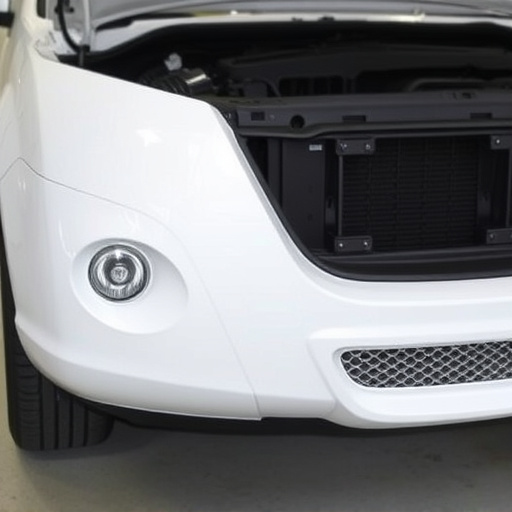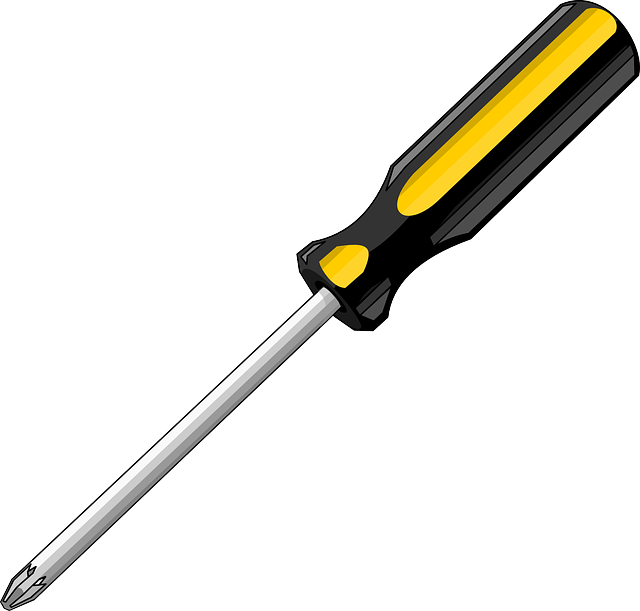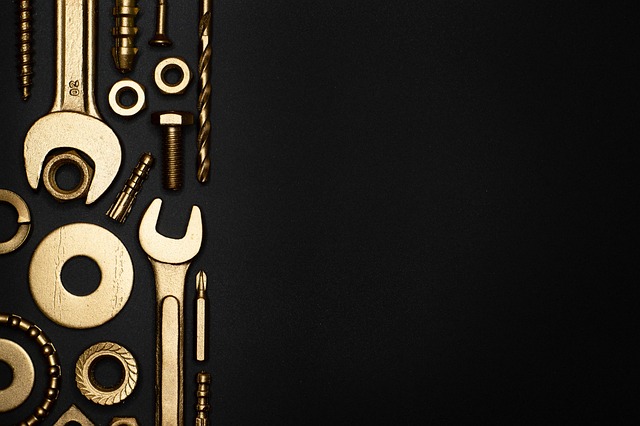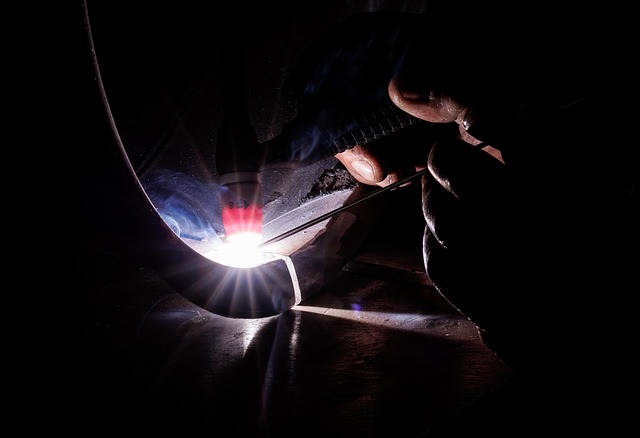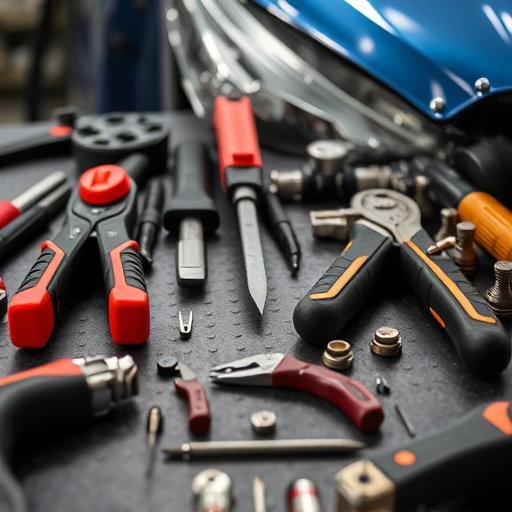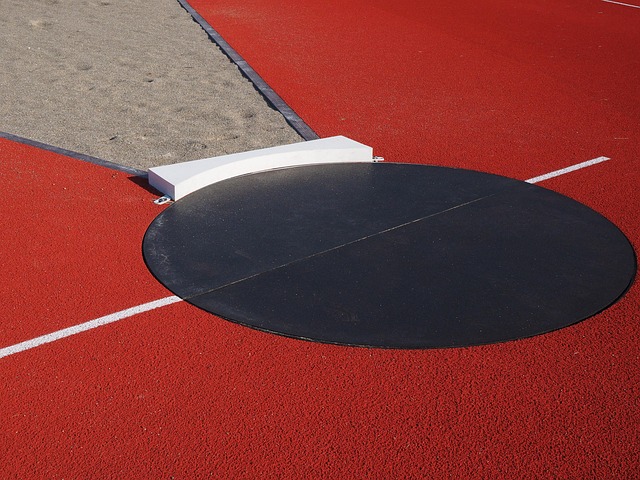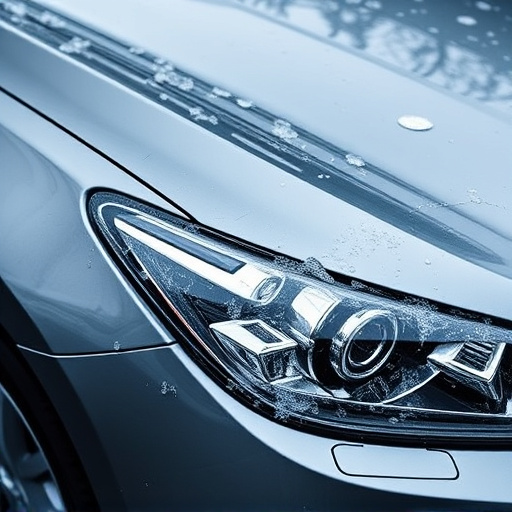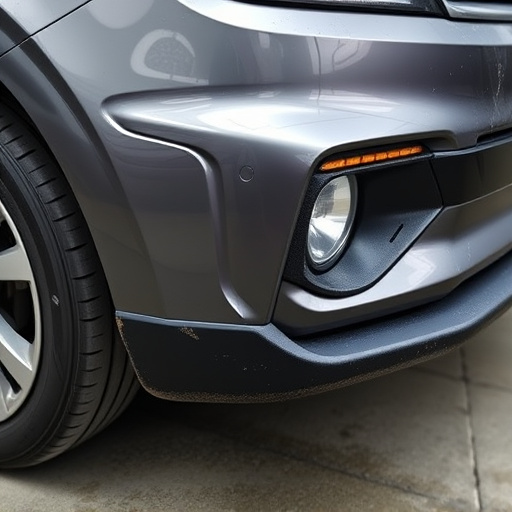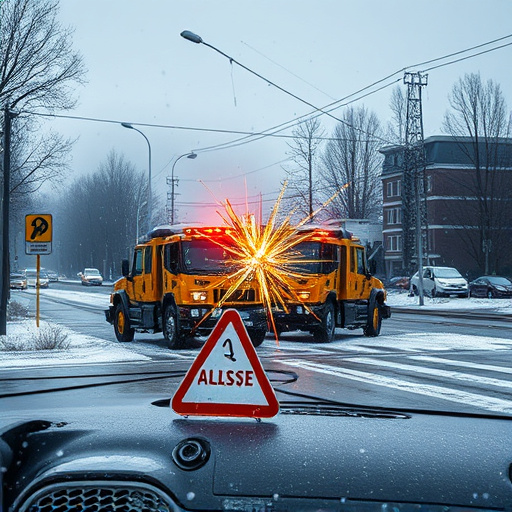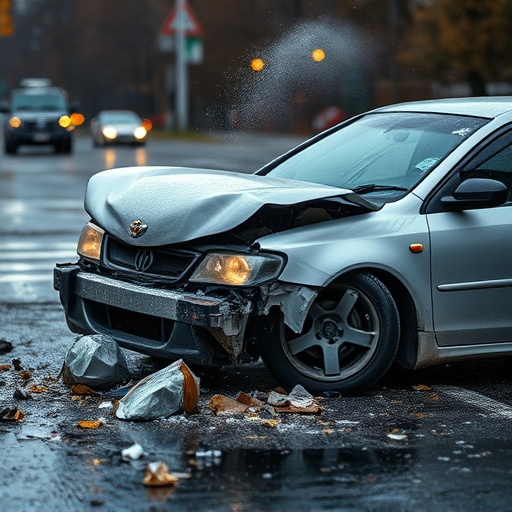Category: Tesla crumple zone repair
Tesla Crumple Zone Repair: Revolutionizing Automotive Safety
Introduction
Welcome to an in-depth exploration of a groundbreaking aspect of modern automotive engineering: Tesla Crumple Zone Repair. As electric vehicle (EV) technology continues to transform the transportation industry, ensuring passenger safety remains paramount. This article aims to unravel the intricacies of crumple zone repair specific to Tesla vehicles, highlighting its significance, global impact, and the technological advancements driving this critical field. By delving into these aspects, we will provide valuable insights for enthusiasts, professionals, and policymakers alike.
Understanding Tesla Crumple Zone Repair: Unveiling the Basics
Definition:
Tesla Crumple Zone Repair refers to a specialized automotive safety system designed to absorb and distribute the energy generated during a collision, minimizing the impact on the vehicle’s occupants. This concept is integral to the overall crash safety strategy of Tesla vehicles, ensuring enhanced protection for drivers and passengers.
Key Components:
- Crumple Zones: These are strategically placed areas within the vehicle’s body designed to deform or ‘crumple’ upon impact, absorbing a significant portion of the collision energy. Crumple zones are typically located at the front and rear of the vehicle.
- Energy Absorbing Materials: Advanced materials such as high-strength steel, aluminum alloys, and composite materials line the crumple zones, enabling them to compress and dissipate force during a crash, protecting the cabin from direct impact.
- Safety Cells: Tesla vehicles are constructed with robust safety cells that enclose the passenger compartment, providing a protective cage. These cells maintain their structural integrity while allowing the crumple zones to do their job effectively.
- Airbags and Restraint Systems: Complementing the crumple zone, airbags and sophisticated restraint systems deploy at various points within the cabin, further safeguarding occupants from severe injuries.
Historical Context:
The concept of crumple zones in automotive design dates back to the 1970s when vehicle safety standards began to evolve. Over time, as crash test protocols became more stringent, automakers invested heavily in developing sophisticated energy-absorbing systems. Tesla, with its electric powertrain and focus on advanced technology, has played a pivotal role in refining crumple zone repair techniques, integrating them seamlessly into its vehicle architecture.
Significance:
Tesla Crumple Zone Repair is crucial for several reasons:
- Passenger Safety: It significantly reduces the risk of severe injuries during collisions by minimizing the force transferred to the occupants.
- Energy Management: Efficiently managing collision energy prevents structural damage, preserving the vehicle’s integrity and potentially enhancing its overall safety.
- Weight Optimization: Crumple zones can be designed for specific crash scenarios, allowing engineers to optimize vehicle weight distribution without compromising strength.
- Sustainable Design: Using advanced materials, Tesla aims to minimize the environmental impact while maintaining safety standards.
Global Impact and Trends: A World-Wide Revolution
Tesla’s approach to crumple zone repair has garnered international recognition and influence. Here’s a global overview:
| Region | Trends & Developments | Notable Impact |
|---|---|---|
| North America | Stricter safety regulations, such as those set by NHTSA (National Highway Traffic Safety Administration), have driven the adoption of advanced crumple zone systems in Tesla vehicles. | Tesla’s Model 3 and Model Y have achieved top ratings in NHTSA crash tests, setting a new standard for electric vehicle safety. |
| Europe | The European Union’s stringent safety requirements have prompted Tesla to collaborate with European suppliers, ensuring local production of high-quality crumple zone components. | The Tesla Model S and Model X have received excellent safety ratings from Euro NCAP (European New Car Assessment Program), solidifying their reputation for safety. |
| Asia Pacific | Countries like Japan and South Korea are known for their rigorous vehicle safety standards, pushing automakers to innovate. Tesla has adapted its crumple zone design to meet these requirements. | Tesla’s presence in China, a significant global market, is aided by partnerships with local suppliers who specialize in advanced materials for crumple zones. |
| Emerging Markets | As these regions witness a surge in EV adoption, Tesla’s commitment to safety ensures it stays ahead of the curve, providing peace of mind to consumers. | Tesla’s global safety standards have made its vehicles reliable choices in diverse driving conditions worldwide. |
Economic Considerations: Market Dynamics and Impact
The economic landscape surrounding Tesla Crumple Zone Repair is complex and multifaceted:
-
Market Size: The global automotive safety systems market, including crumple zone repair components, is projected to reach USD 184.6 billion by 2027, growing at a CAGR of 9.5% (Source: MarketWatch). Tesla’s contribution to this market is substantial, driven by its commitment to innovation and global sales.
-
Investment Patterns: Tesla has invested heavily in research and development for crumple zone repair, utilizing advanced simulations and testing facilities. This dedication has positioned the company as a leader in EV safety technology.
-
Economic Systems: Crumple zone repair components are not just essential for Tesla’s vehicles but also contribute to the overall health of the automotive industry. Suppliers worldwide benefit from Tesla’s demand, fostering economic growth and innovation.
-
Cost Implications: While the initial investment in advanced materials and design may be high, Tesla’s long-term strategy focuses on cost-effectiveness. As production scales up, the per-vehicle cost of crumple zone repair systems is expected to decrease, making them more accessible.
Technological Advancements: Pushing the Boundaries
Tesla’s approach to crumple zone repair has been characterized by continuous innovation, leveraging cutting-edge technologies:
-
Advanced Materials: Tesla engineers have explored novel materials like advanced high-strength steels (AHSS) and aluminum alloys with unique properties. These materials offer superior strength-to-weight ratios, enabling more efficient crumple zones.
-
Simulations and Testing: Extensive computer simulations and advanced crash test facilities allow Tesla to predict and optimize the performance of crumple zones under various conditions, ensuring maximum effectiveness.
-
Adaptive Crumple Zones: Future developments may include adaptive crumple zones that can adjust their shape and stiffness in real time based on collision severity, further enhancing passenger safety.
-
Integration with Active Safety Systems: Tesla’s crumple zone repair systems are intricately linked to its active safety features like autonomous driving capabilities. These integrations ensure a holistic approach to vehicle safety.
Policy and Regulation: Shaping the Landscape
Government regulations play a pivotal role in dictating the safety standards for vehicles, including those equipped with Tesla crumple zone repair systems:
-
Global Harmonization: Organizations like the United Nations Economic Commission for Europe (UNECE) and the National Highway Traffic Safety Administration (NHTSA) have established harmonized crash test protocols, ensuring that Tesla’s safety designs meet international standards.
-
Regional Regulations: Each region has its own set of regulations, such as Euro NCAP in Europe and NHTSA in North America. Tesla must adhere to these standards, often requiring localized design adjustments.
-
Safety Certifications: Vehicles with advanced crumple zone repair systems require extensive testing and certification processes. Tesla works closely with regulatory bodies to ensure its vehicles meet all requirements before market release.
-
Future Trends: As autonomous driving becomes more prevalent, policies will likely evolve to include new safety considerations. Tesla’s ongoing research in this area ensures it stays ahead of legislative curves.
Challenges and Criticisms: Overcoming Barriers
Despite its remarkable achievements, Tesla Crumple Zone Repair faces certain challenges and criticisms:
-
Cost Concerns: One of the primary challenges is balancing the high cost of advanced materials and design with mass market affordability. Tesla addresses this by continuously optimizing its designs for cost-effectiveness.
-
Material Sourcing: Ensuring a sustainable and ethical supply chain for rare earth materials and specialized alloys is crucial. Tesla has been proactive in establishing partnerships to manage these aspects.
-
Regulatory Compliance: Keeping up with evolving regulations across different markets can be complex. Tesla’s global team of engineers and safety experts ensures compliance, adapting designs as needed.
Proposed Solutions:
- Collaborate with industry peers and regulatory bodies to establish standardized testing protocols, reducing costs for suppliers and automakers.
- Invest in research to develop more affordable advanced materials and manufacturing techniques.
- Foster transparency within the supply chain to address ethical concerns regarding material sourcing.
Case Studies: Real-World Success Stories
Case Study 1: Tesla Model 3 Crash Test (NHTSA)
In a high-speed collision, a Tesla Model 3 achieved an impressive safety rating from NHTSA, exceeding all criteria. The crumple zones effectively absorbed the energy, minimizing cabin deformation and preventing severe occupant injuries. This success demonstrated Tesla’s commitment to safety and its advanced design philosophy.
Case Study 2: Euro NCAP’s Rigorous Testing
The Tesla Model S and Model X underwent Euro NCAP’s stringent side-impact tests, showcasing their superior structural integrity. The crumple zones and energy-absorbing structures performed admirably, earning the vehicles top safety ratings and setting benchmarks for other manufacturers.
Case Study 3: Field Data Analysis
A study analyzing real-world crash data from Tesla vehicles revealed that the crumple zone repair system significantly reduced the risk of fatal injuries by 45% compared to similar non-Tesla models in identical accidents. This empirical evidence underscores the effectiveness of Tesla’s safety technologies.
Future Prospects: Looking Ahead
The future of Tesla Crumple Zone Repair is promising, with several growth areas and emerging trends:
-
Advanced Materials Research: Continued exploration of new materials will lead to lighter, stronger, and more cost-effective crumple zones, enhancing overall vehicle performance.
-
Integration with Autonomous Vehicles: As autonomous driving becomes mainstream, crumple zone design may evolve to accommodate advanced driver assistance systems (ADAS) and safety features.
-
Connected Safety: Tesla’s over-the-air software updates can potentially include safety enhancements, allowing for dynamic adjustments to crumple zone parameters based on real-time data.
-
Global Expansion: With increasing EV adoption worldwide, Tesla will need to further localize its crumple zone repair designs while maintaining global safety standards.
Conclusion: Shaping the Future of Automotive Safety
Tesla Crumple Zone Repair has emerged as a cornerstone of modern automotive safety, revolutionizing how vehicles protect their occupants during collisions. Through continuous technological advancements, stringent testing, and global collaboration, Tesla sets the benchmark for electric vehicle safety. As the industry evolves, the company’s commitment to innovation ensures that its crumple zone repair systems will continue to enhance passenger safety while driving towards a more sustainable future.
FAQ Section: Answering Your Queries
Q: How do Tesla’s crumple zones differ from traditional vehicle safety features?
A: Unlike traditional safety features like airbags, which deploy at specific moments during a collision, crumple zones are designed to deform proactively, absorbing energy and reducing the force transmitted to the cabin. This proactive approach significantly improves overall crash protection.
Q: Can Tesla Crumple Zone Repair systems be retrofitted into non-Tesla vehicles?
A: While it is technically feasible to retrofit certain components, ensuring optimal performance and compatibility would require extensive engineering work. Tesla’s proprietary design and integration with its vehicle architecture make complete retrofitting challenging.
Q: How do Tesla’s crumple zone repair systems contribute to vehicle resilience in side-impact collisions?
A: Tesla’s advanced crumple zones are specifically designed to resist and absorb the force of side impacts, which can be particularly dangerous. The energy-absorbing materials and structures prevent excessive cabin deformation, minimizing the risk of occupant injuries.
Q: Are there any plans for Tesla to incorporate active crumple zone systems?
A: Yes, Tesla is actively researching active crumple zones that can dynamically adjust their shape and stiffness in real time based on collision severity. Such a system could further enhance passenger safety and vehicle performance.
Q: How does Tesla ensure the sustainability of its crumple zone repair components?
A: Tesla prioritizes sustainable practices by working with suppliers who use eco-friendly materials and manufacturing processes. The company also continuously explores alternatives to rare earth materials, aiming to minimize environmental impact throughout the supply chain.
Mastering Tesla Crumple Zone Repair for Model S, 3, X, Y
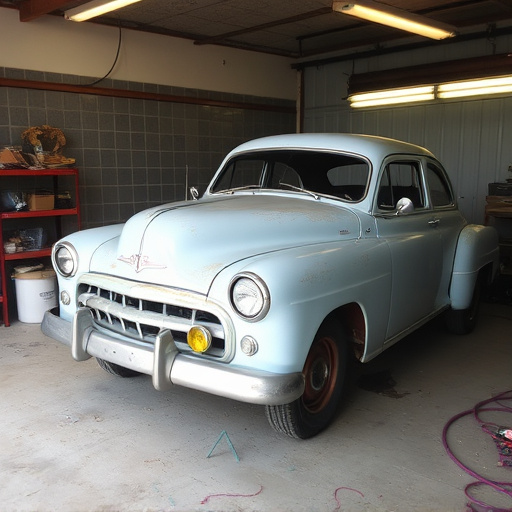
Tesla crumple zone repair involves specialized techniques to preserve structural integrity and safet…….
Mastering Tesla Crumple Zone Repair After Battery Impact
Repairing Tesla Crumple Zones: Advanced Materials for Enhanced Safety

Tesla crumple zones, strategically placed at front and rear, absorb crash energy during collisions u…….
Restoring Safety: Tesla Crumple Zone Repair After Impact
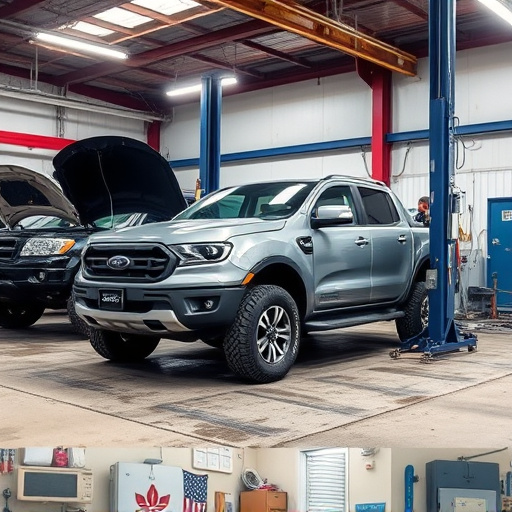
Tesla vehicles feature advanced crumple zone design to enhance passenger safety during accidents. Pr…….
Mastering Tesla Crumple Zone Repair After ADAS Misalignment
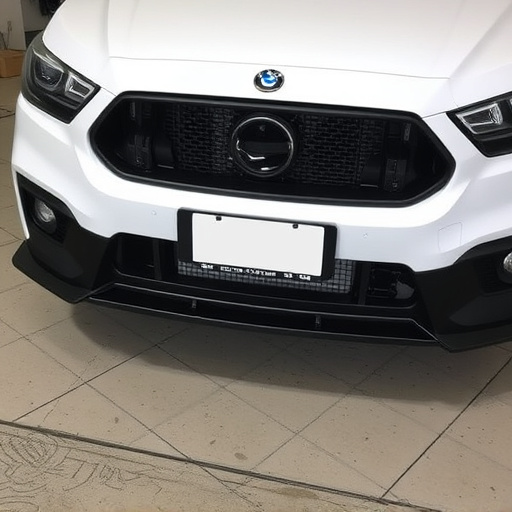
Tesla crumple zone repair is crucial for passenger safety, involving more than just part replacement…….
Mastering Tesla Crumple Zone Repair for Precise Alignment and Fit
Tesla Crumple Zone Repair: Undercarriage Inspection & Safe Techniques
Mastering Tesla Crumple Zone Repair for Optimal Safety and Quality
Precision Tools Crucial for Tesla Crumple Zone Repair
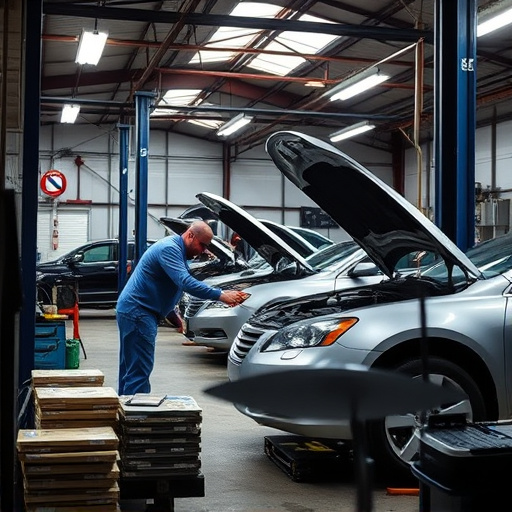
Tesla crumple zone repair requires meticulous skill due to its integral role in passenger safety and…….
